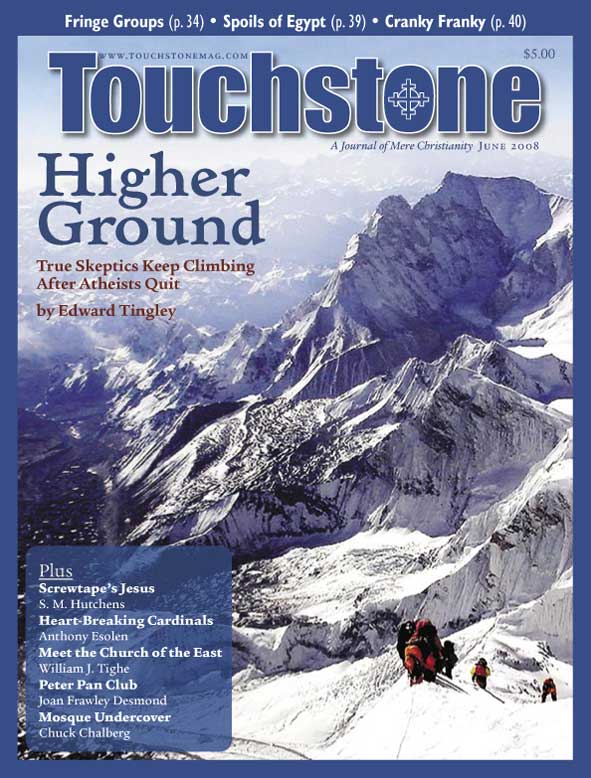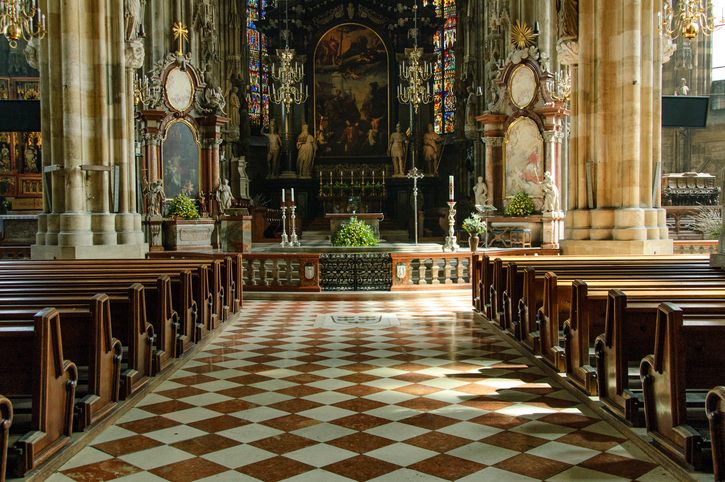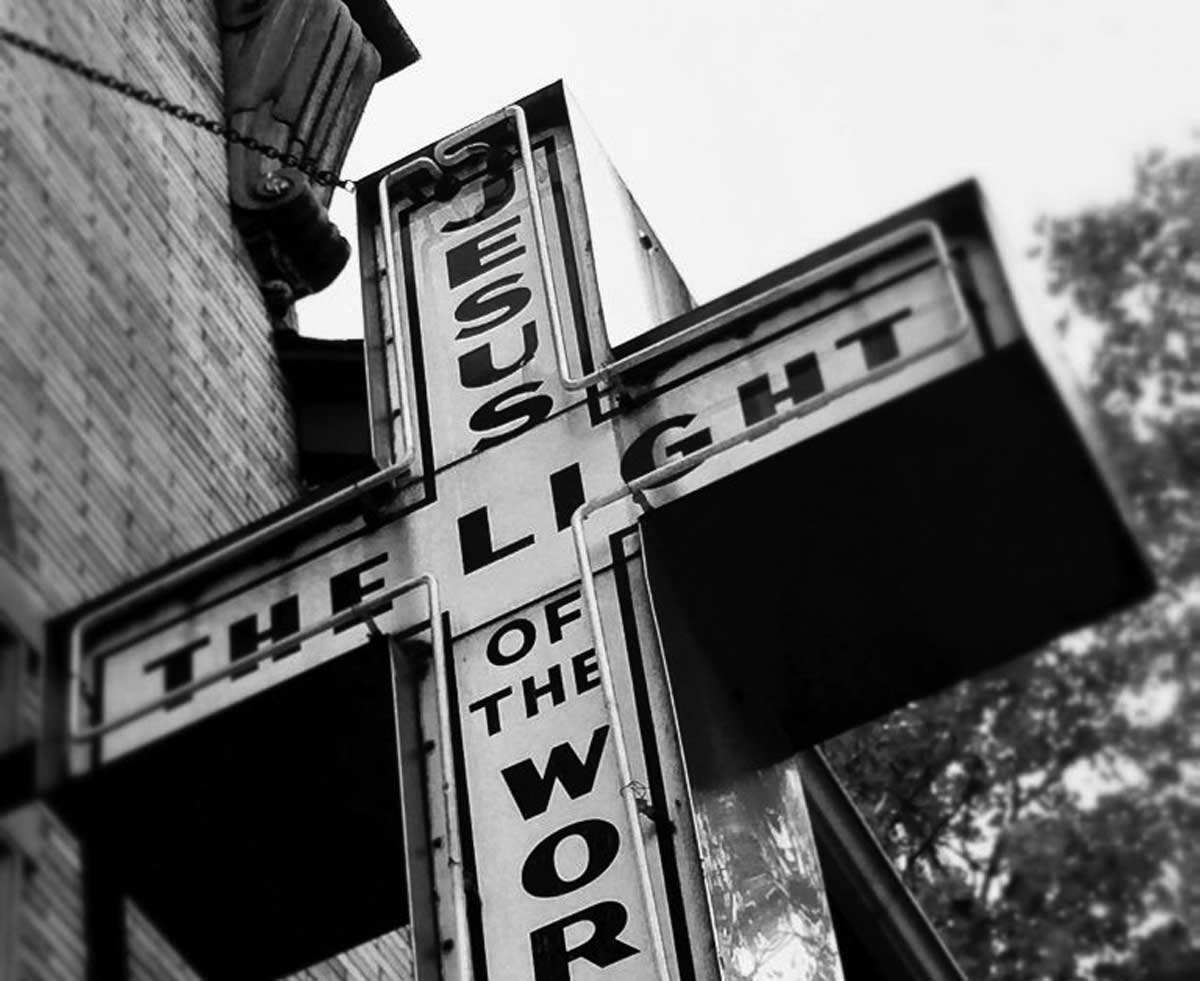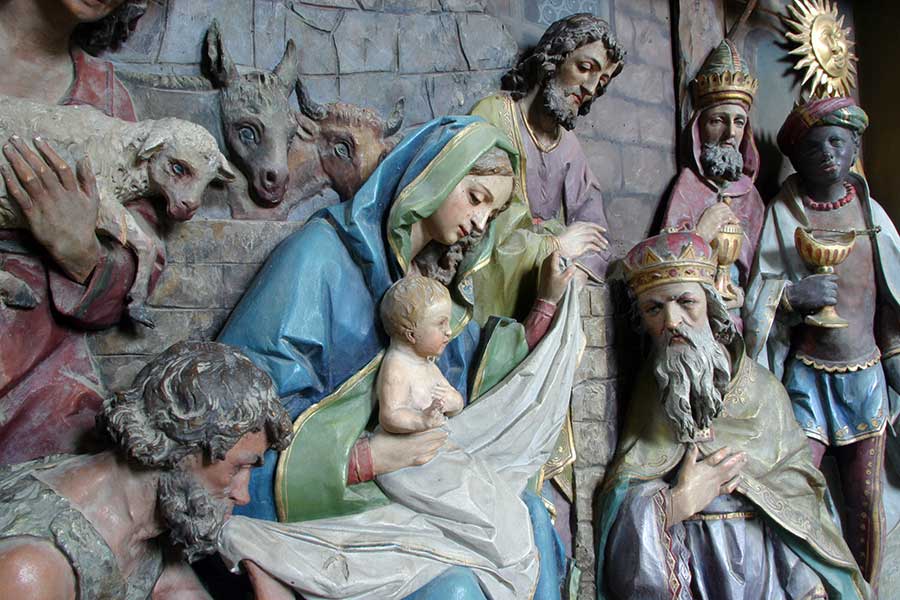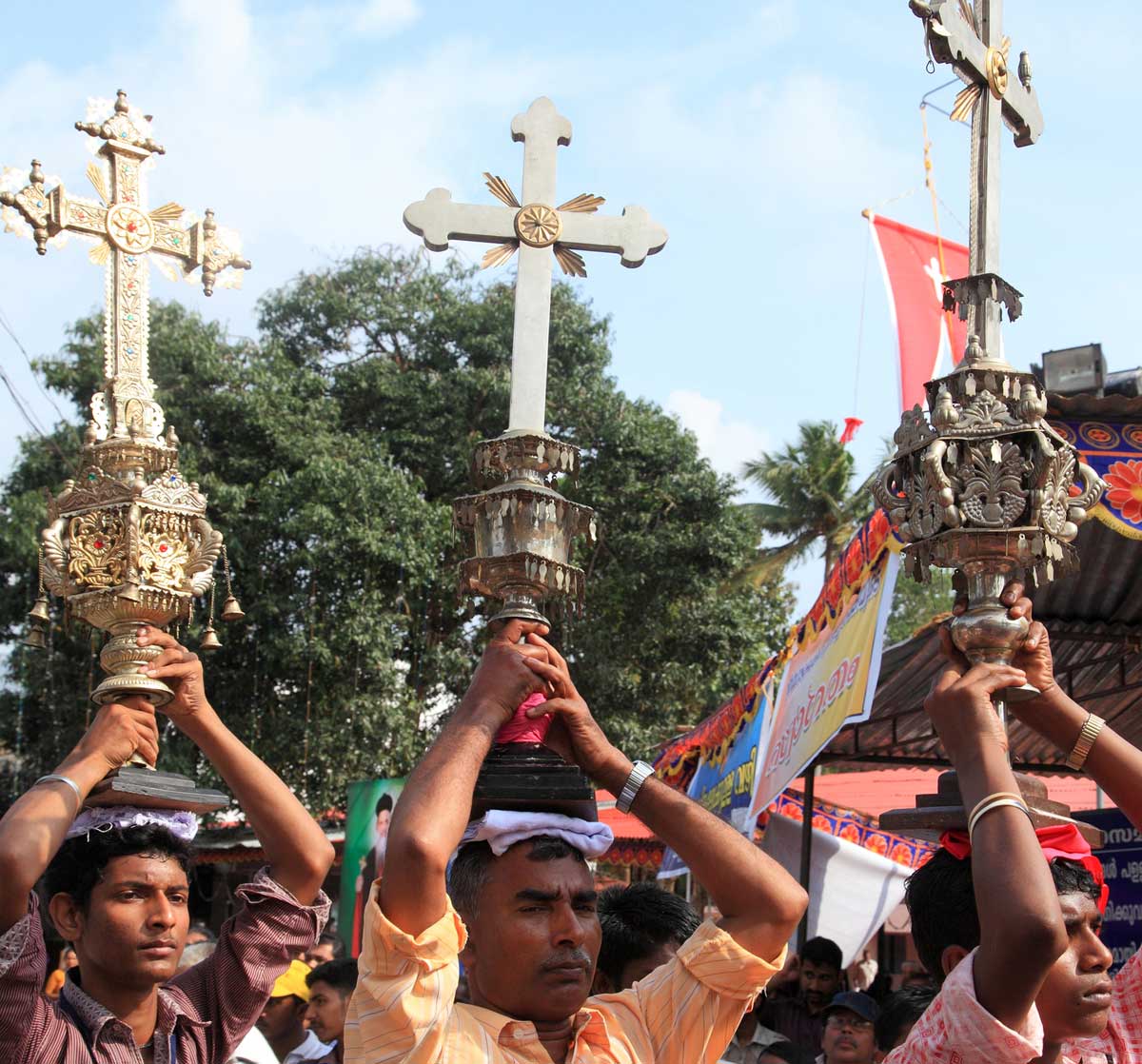The Shadow of Nestorius
An Alienated but Enduring Church After the Third Ecumenical Council
The Church of the East: An Illustrated History of Assyrian Christianity
by Christoph Baumer
I. B. Tauris, 2006
(336 pages, £27.50 [approx. $54.75], hardcover)
A review by William J. Tighe
The Holy Apostolic and Catholic Assyrian Church of the East,” the subject of this fascinating and lavishly illustrated book, has often been known as the Nestorian Church due to its rejection of the third ecumenical council, which met at Ephesus in 431 and condemned the teachings of Nestorius, Patriarch of Constantinople. This church consequently lived much of its history in separation and alienation from other ancient Christian churches—the Catholic, the Orthodox, and the Oriental Orthodox. It also was decimated and scattered by an attempted Turkish genocide at the end of World War I.
I. THE HISTORY
Nestorius (c. 382 – c. 452) was a monk of Mesopotamia who had studied under the great Syrian theologian and bishop, Theodore of Mopsuestia (352–428), and earned a reputation for zeal, eloquence, theological learning, and personal asceticism that brought him to the patriarchal throne in 428. His zeal, however, rapidly made him odious to various constituencies in Constantinople. His theological skill was matched with a disdain for his opponents and with a stubborn persistence in his own views that was to contribute to their condemnation at Ephesus and to his own removal and confinement for the rest of his life.
The “School of Antioch,” to which he belonged, tended to stress a “literal and historical” reading of the Bible; emphasized a sharp distinction between the divine nature and the human nature of the Incarnate Christ (which, in its most extreme form, spoke of the “two sons”); and emphasized the moral striving of free-willed human beings, incorporated into Christ by baptism and strengthened by the Eucharist, to follow Christ’s precepts.
Antioch’s theology was sharply at odds with the “School of Alexandria,” which favored mystical and allegorical readings of the Bible; stressed the unity of the divine and human natures in the one person of the Incarnate Christ; and emphasized the communication of resurrection and immortality to individual Christians through baptism and participation in the divinized Flesh and Blood of the Incarnate Christ at the Eucharist. Whereas Alexandria favored the “communication of idioms” between Christ’s two natures, such that one might say that “one person of the Trinity suffered in the flesh and died on the cross,” this was a blasphemous assertion to the Antiochenes.
The clash arose from Nestorius’s denial that the Blessed Virgin Mary should be termed “Theotokos” or “Mother of God”—a watchword of the School of Alexandria and a title dear to popular piety in Constantinople. His opponents, led by the learned and politically sophisticated Patriarch of Alexandria, Cyril (c. 375–444), claimed, inexactly but not implausibly, that Nestorius and his supporters believed that, in Christ, two persons coexisted side by side, the “Word of God” and the “Man Jesus,” and that the two were united only by a “moral union” of their two wills.
Nestorius exasperated many by insisting on “exactitude” in theological terminology despite his own vagueness on the central point at issue in the controversy: the existence of what might be termed today one “center of consciousness” in the Incarnate Christ. Cyril’s skill and Nestorius’s stubbornness, plus the unwavering support that Pope Celestine gave to Cyril, ensured Nestorius’s condemnation at Ephesus. Further, in 433, Cyril’s theological adroitness enabled him to reconcile the greater part of the Antiochene bishops and theologians to Nestorius’s condemnation in the “Formula of Reunion.”
But the minority that insisted on the orthodoxy of Nestorius’s views soon had to flee from the Roman Empire across the Mesopotamian frontier into the Persian Empire, where, over the next four decades, their views came to dominate the native Syriac-speaking Christian Church. This church ever afterwards looked back to Theodore of Mopsuestia (whose Christological views were condemned posthumously by the fifth ecumenical council in 553) as its teacher par excellence and to Nestorius as a theologian of note unjustly condemned through the intrigues of his enemies, especially the scheming Cyril.
Historical Accident
So the “Church of the East” was not founded by Nestorius or his followers, and its connection with him is something of a historical accident. The actual origins of Christianity in Mesopotamia, beyond the frontiers of the Roman Empire, are obscure and fraught with legend and confusion.
According to the traditional version, Mar Addai (Thaddeus), one of the Seventy Disciples of the Lord ( Mar is Syriac for Lord or Master and is used in Syriac Christianity for bishops), brought Christianity to the Kingdom of Osrohene, a small state located in northern Mesopotamia between the Roman and Parthian Empires, with Edessa as its capital. Addai converted King Agbar V (13–50) to Christianity. He also sent one of his two disciples, Mari, to evangelize southern Mesopotamia and Persia, while keeping the other, Aggai, with him as his assistant.
Some years later, Addai died, and Aggai became his successor. But King Agbar’s sons rejected Christianity, and when one of them mortally attacked Aggai, the latter, dying, appointed one Palut as his successor, and this Palut became the first bishop of Edessa. Meanwhile, Mari, in his turn, had a long, wide-ranging, and successful life as an evangelist in Mesopotamia and parts beyond.
Into the mix comes the Apostle Thomas. Some versions of his life have him evangelizing what is today Afghanistan and Pakistan, then moving on to southern India and establishing churches there (which by the fourth century had become a province of the Church of the East) before his martyrdom around A.D. 68.
Scholars lack the information to make much sense of these stories, but it appears that the “pioneers” of Christianity in Mesopotamia in the second century may have been Gnostic or Jewish Christian sects. By 201, there was an orthodox church in Edessa, whose bishop was dependent on Antioch. Most of Mesopotamia was part of the tolerant, if ramshackle, Parthian Empire, but when the Parthians were overthrown in 227 and replaced by the aggressively Zoroastrian New Persian Empire, Christians (along with Buddhists and Manicheans) became subject to episodes of fierce persecution during the next 400 years.
Even so, the church continued to grow and spread, and by 310 its “catholicos” (later “patriarch”) was the bishop of Ctesiphon, the Persian capital, some twenty miles south of today’s Baghdad. The Persian Church shared the faith of the “Great Church” within the Roman Empire, although the rise of Christianity to the status of the official religion of the Roman Empire in the fourth century brought added afflictions upon its faithful, as Persia and Rome were inveterate enemies. In 424 the Persian Church effectively declared its administrative independence from the Church within the Roman Empire, although for a time both churches continued to share the same orthodox faith.
Estrangement & Decline
It is difficult to date the doctrinal separation of the Church of the East from the Church within the Roman Empire, save that it occurred around the end of the fifth century. The Church of the East never formally embraced the views of Nestorius, although it rejected his condemnation at Ephesus (as well as the council itself). Its theologians found the dogmatic definition on Christology of the Council of Chalcedon (451) perfectly acceptable, although none of its bishops were present at that council. The estrangement occurred between 482 and 518, when emperors in Constantinople embraced ambiguous theological formulae designed to reconcile opponents of Chalcedon with its supporters by ignoring the council as much as possible, and by emphasizing the heterodoxy of Nestorius and his teachers and supporters.
In the sixth century, more than one catholicos of the Church of the East attempted without success to reach theological agreement and restore communion with the Church in the Roman Empire. Its principal divergence from that church was its rejection of the title of “Mother of God” for the Virgin Mary, although it has always acclaimed her as the “Mother of Our Lord, God, and Savior Jesus Christ.” (Its other noteworthy point of difference, its rejection of all pictorial iconography—a feature that attracted much interest from Protestants in the nineteenth century—Baumer shows to be an innovation of the late fourteenth century and a response to increased Muslim persecution.)
In the fifth and sixth centuries, the Church of the East spread rapidly. In order to accommodate Zoroastrian insistence on procreation as a civic duty, it abandoned its previous strict adherence to clerical celibacy and allowed, and for a time even required, the marriage of bishops, priests, and deacons. (Later, it made clerical marriage optional and required bishops to be celibate monks). In the late 620s and early 630s, it seemed poised to replace Zoroastrianism as the official religion of the Persian Empire, but this opportunity was lost when the Muslim Arabs overran Persia in the late 630s and 640s.
Muslims, Mongols & Rome
This Muslim conquest initially set the Church of the East free from persecution and enabled it to expand into Central Asia over the next 500 years. The church even had a presence in China from 635, when the first missionaries arrived, to 845, when Christianity and other “foreign religions” were outlawed. (Baumer discusses this expansion in detail, with the history and mysterious origins of the Church of the East’s offshoot in South India.) In the long run, however, the Muslim conquest ensured the church’s decline and eventual near-extinction from the fifteenth century onwards.
Before the final collapse of the Church of the East, however, history nearly repeated itself when the branch of the Mongols that conquered the Near East in the 1240s and 1250s and ruled it for over a century initially favored the Church of the East above all other religions (while pursuing a policy of hostility toward Islam). In the 1270s and 1280s they came close to embracing Christianity before finally choosing Islam in 1292. They then persecuted Christianity and Buddhism to demonstrate their Islamic zeal. At the same time, a second mission to China, from the 1230s onwards, reestablished Christianity there, only to be suppressed once again after Mongol rule was overthrown in 1368.
By 1500, the Assyrian Christians were confined to the plains of what is today Kurdistan in northern Iraq and to the mountainous regions of southeastern Turkey and northeastern Iran. A distant “province” in South India was lost to Catholicism in the sixteenth century as a result of Portuguese pressure and Jesuit missionary efforts.
In the meantime, the church’s patriarchate had become hereditary, passing from uncle to nephew (or cousin) in the Abuna family. A group of bishops revolted against the hereditary descent of the patriarchate in 1552. They chose a rival leader, who went to Rome, professed Catholicism, and obtained papal recognition, only to be murdered in 1555 after his return to Mesopotamia.
This “rival church,” whose adherents lived in the mountains, remained in communion with Rome for some decades, but it eventually repudiated communion in 1672 in response to Rome’s insistence that it remove Nestorius and Theodore of Mopsuestia from its calendar of saints. By that time, its own patriarchate had become hereditary in the Shimun family, but it still remained separate institutionally from its mother church.
The numerically larger “original church” down in the plains underwent a series of schisms, reunions, and renewed schisms beginning in 1668. From 1681 onwards, a number of its bishops turned to Catholicism, and more did so in the eighteenth century, until, in 1804, all of the remaining bishops of the “original” Church of the East entered into union with Rome as the “Chaldean Catholic Church.” So, ironically, the contemporary Assyrian Church is the lineal descendant of a temporary union with Rome, while the original Church of the East has become an Eastern Catholic Church.
More Empires
In the nineteenth century, while the Chaldean Catholics steered clear of political activism, the Assyrians were courted by the rival British and Russians, whose activities drew upon them the suspicion of their Turkish masters and the envy and hostility of their numerically superior Kurdish Muslim neighbors. It was the British who also gave them the name “Assyrian” (previously they had simply called themselves “Syrians,” along with other Syriac-speaking Christians) because they lived in what had been the heartland of the Assyrian Empire some 2,500 years earlier.
A considerable portion of the Assyrian clergy and laity united with the Russian Orthodox Church shortly before World War I, and the Assyrians as a whole allied themselves with the Russians at the high point of the temporarily successful Russian invasion of eastern Turkey in 1915, in the hope of obtaining a homeland of their own. This left them open, however, to reprisals, and when the Russian forces retreated in 1916 and collapsed in 1917, the whole community of “mountain Nestorians” (as they were often termed) were expelled by the Turks and Kurds from their farms and villages.
They relocated in the Tigris valley in what is today northern Iraq, and in the course of this exodus, perhaps 65 percent of them perished, including their patriarch. Forbidden to return to Turkey, they began to agitate for a homeland in what had once been Assyria, but when the British protectorate in Mesopotamia became the independent Kingdom of Iraq in 1932, they were once again crushed by force.
A large number of them left for America, Australia, Great Britain, Sweden, and Syria, including their last hereditary patriarch, Mar Shimun XXII Eshai (1908–1975), who had become patriarch a the age of twelve—a vocation that had been forced on him by birth. He exercised capable, if erratic leadership, settling in Chicago, San Francisco, and finally San Jose, California. In 1973 he married an Assyrian lady some 35 years his junior, and he was preparing to resign his ecclesiastical office when he was assassinated on November 6, 1975, by an Assyrian nationalist who disagreed with his political quietism.
In 1976, a synod of Assyrian bishops chose as a successor the present patriarch, Mar Dinkha IV Khanaya, who made peace with Saddam Hussein’s Iraq. Since 1994, he has led his church into very close ecumenical relations with Rome and with the Chaldean Catholic Church. There are, perhaps, some 200,000 adherents of the Church of the East today, and some 600,000 Chaldean Catholics. Most of the former live outside their ancient homeland, and most of the latter within it—although since 2004, they have been emigrating in growing numbers in the face of militant Islamic attacks upon them and the specter of coerced conversion or reduction, once again, to dhimmitude.
II. THE BOOK
Baumer’s book covers all this history. It is generally chronological in its organization, although there are particular chapters devoted to the “Mission to the East” (Central Asia and China) and to the “Thomas Christians of South India.” The book is full of fascinating photographs and good maps. It also has an “Annex,” giving lists of the various Eastern Churches and their taxonomic relations to one another; lists of the patriarchs of the Chaldean Catholic Church and the Church of the East; and lists of Persian, Arab, and Mongol dynasties and rulers. It has abundant endnotes, organized chapter by chapter, and an ample bibliography.
The book falls between the scholarly and the popular: It would grace a coffee table, but it is by no means a light read. However, its challenge to readers comes not from the author’s prose style (although at times it seems to indicate that English is not his native language) or from any deficiencies in the book’s organization, but from the immensity and complexity of its fascinating subject.
Flawed Setting
There are problems, though. It is entirely understandable that the author (whom the dust-jacket blurb describes as “a leading explorer of Central Asia and Tibet, who has made several important archaeological and historical discoveries on his journeys”) should have a warm predilection for the subject of his book, such that he displays an indignant grief at the way the Assyrian people were maltreated by their rulers and Muslim neighbors and exploited by the “great powers” over the past 150 years. But he also seems at times to consider the efforts of the Catholic Church and the Orthodox Church to bring the Assyrians into union and communion with their respective churches as likewise exploitative and obnoxious.
Any beautiful work of history, like a portrait, needs a setting in which to display it at its best. In this case, the “setting” would be background treatment of Christianity in general and, in particular, of Christian origins, theology, and doctrine. But it is precisely in these areas that the depth and accuracy of the author’s knowledge, and the soundness of his judgment, prove most questionable, or even lacking.
Perhaps the author’s contrasting of certain beliefs of the Church of the East—its strong belief (following the School of Antioch) in human free will, along with what Baumer terms its “rejection of original sin,” and its consequent belief that “human nature is fundamentally good” and that Christ’s resurrection “opened the door for the human person to the recovery of Adam’s prelapsarian nature”—with the Western embrace of Augustine’s views is simply a careless exaggeration of the real differences in emphasis between Latin and Eastern Christianity. But one’s doubts on this score are hardly assuaged when Baumer later asserts that the doctrine of original sin was “an influence of Manichean thought” introduced into the Western church through St. Augustine.
As he develops his ideas further, Baumer seems to suggest that the soteriological views of the Western ascetic theologian Pelagius and those of Theodore of Mopsuestia were more or less identical. He goes on to attribute similar views to St. John Chrysostom, St. Isaac of Nineveh (a monk and, briefly, bishop of the Church of the East who died ca. 700 and whose ascetical writings were so highly esteemed that eventually he was accepted as a saint in the Orthodox Church), and other Syriac churchmen.
He tells us that popular devotion to the Blessed Virgin Mary first arose in Egypt, and that “it developed there out of the cult of the goddess Isis and her son Horus” and rapidly spread to Constantinople. Thus, Nestorius (and his followers), in denying the legitimacy of terming her Theotokos (Mother of God), was offending a thinly Christianized popular pagan religiosity, and so left himself open to the machinations of the wily Alexandrian patriarch, Cyril, to discredit and destroy him.
Error & Sentiments
He also tells us, in a footnote, that St. Paul’s death occurred in A.D. 58, though most scholars would place it almost a decade later; that the “concept of the Trinity . . . signified a watering down of strict Hebrew monotheism,” although he later has some harsh words for monotheism itself, whose “spirit” he sees epitomized in the condemnation of heretics; that the Emperor Constantine “declared himself a Christian” after the battle of the Milvian Bridge in 312, whereas he waited until he was on his deathbed in 337 to do so and to be baptized; that the “primacy of the bishop of Rome” was “established under Pope Damasus (in office 366–384)”; that the Emperor Constantine was opposed to Arianism for political reasons, whereas he actually spent his last years supporting the rehabilitation of Arius, even at the price of doing an end run around the Creed of the Council of Nicaea; and that, for Augustinian Christianity as for Manichaeism, the opposition between good and evil was identical with that between spirit and matter.
When he discusses the Council of Chalcedon, he treats it as effectively a vindication of Nestorius’s Christological views, even though that council upheld his condemnation (“Chalcedon nearly confirmed the teachings of Nestorius but condemned his person, while it largely abjured the teachings of Cyril but lauded him as a saint”)—a grossly distorted version of a view of Chalcedon that has heavily influenced the Western historiography of that council, but which in recent years has been discredited by the work of scholars such as the late John Meyendorff and John McGuckin (see McGuckin’s St. Cyril of Alexandria and the Christological Controversy [1994, 2004]).
He curiously characterizes the role that the lay faithful played in the selection of bishops in the Church of the East—a right to an undefined “participation” and to reject bishops “imposed on them from the outside”—as “direct democracy” and goes on to suggest that its revival today in Western Europe might “reduce the obvious distance between clergy and faithful.” He opines that “the betrayal of the pacifistic vision of Christ” by the Church within the Roman Empire after Constantine’s time was so grave a failing that the “ethical compromises that the Church of the East had to make, such as the relaxation of the celibacy requirement, were insignificant.”
At the end of his chapter on “Aspects of East Syrian Theology and Spirituality,” he concludes with the thought that a
reconsideration of the early East Syrian promoters of an optimistic Christian anthropology, unburdened by original sin, as well as an accessible Christology that inspires the imitatio Christi, could help address the current crisis in institutional Christianity. The Church of the East suggests how a Western Church might have appeared without Augustinian pessimism. Isaac’s vision was of a religion of love, while that of Augustine was one of fear.
Such sentiments appear to have as their underlying premise that only by a greater and more assiduous conformity to the Zeitgeist can Christianity be true to itself.
Nevertheless, while the strange gaps in the author’s knowledge, and the curious conceits with which he tries to span, or plug, them, mar his book, they do not destroy its value or the fascination of its subject. Hence, they ought not to discourage interested readers from seeking it out.
Reconciliation & Not
Baumer chronicles the remarkable progress towards reconciliation made in the discussions between the Church of the East, the Chaldean Catholic Church, and Rome since 1994. In their discussions, first of Christology and then of sacramental theology and practice, complete agreement was reached. In the latter case, this led, in 2001 and 2002, to full mutual recognition by all three parties of the sacraments of the others and to the official endorsement of the practice of “Eucharistic hospitality” in emergency and exceptional situations between Assyrians and Chaldeans, and even other Catholics.
Baumer indicates that the final hurdle will be the matter of church organization, government, and the papacy. Alas—and this does not appear in his book—the dialogue appears to have faltered at this point. The Assyrian Church has been experiencing severe internal tension in recent years, especially at the episcopal level, about how to proceed, or even whether to proceed. Since 2002 its bishops have deferred further discussions, while Rome and the Chaldeans appear to see it as the responsibility of the Assyrian Church to make the next move.
Baumer also describes how little progress has been made in dialogues between the Assyrian Church and other Eastern churches, not least due to the demand of the Coptic Orthodox Church of Egypt that the Church of the East formally repudiate the errors of Nestorius as a preliminary to any conversations. Baumer has mastered the history of the Church of the East, and this is particularly evident in his detailed unfolding of its tragic history over the past two centuries.
William J. Tighe was Professor of History at Muhlenberg College in Allentown, Pennsylvania, until his retirement in 2024. He is a member of St. Josaphat Ukrainian Catholic Church in Bethlehem, Pennsylvania.He is a senior editor for Touchstone.
subscription options
Order
Print/Online Subscription

Get six issues (one year) of Touchstone PLUS full online access including pdf downloads for only $39.95. That's only $3.34 per month!
Order
Online Only
Subscription

Get a one-year full-access subscription to the Touchstone online archives for only $19.95. That's only $1.66 per month!
bulk subscriptions
Order Touchstone subscriptions in bulk and save $10 per sub! Each subscription includes 6 issues of Touchstone plus full online access to touchstonemag.com—including archives, videos, and pdf downloads of recent issues for only $29.95 each! Great for churches or study groups.
Transactions will be processed on a secure server.
more on ecumenism from the online archives
more from the online archives
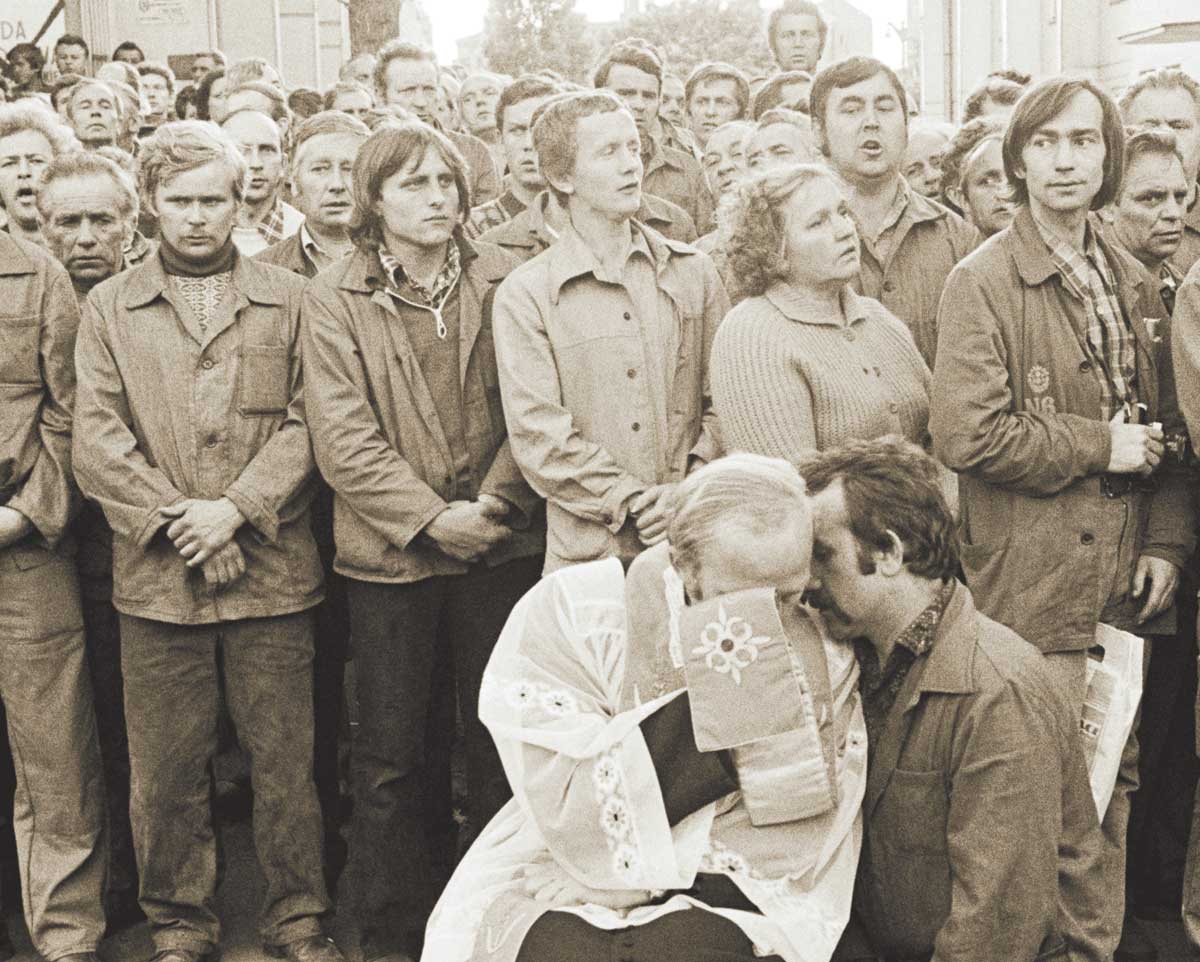
19.10—December 2006
Workers of Another World United
A Personal Commemoration of Poland’s Solidarity 25 Years Later by John Harmon McElroy
calling all readers
Please Donate
"There are magazines worth reading but few worth saving . . . Touchstone is just such a magazine."
—Alice von Hildebrand
"Here we do not concede one square millimeter of territory to falsehood, folly, contemporary sentimentality, or fashion. We speak the truth, and let God be our judge. . . . Touchstone is the one committedly Christian conservative journal."
—Anthony Esolen, Touchstone senior editor





